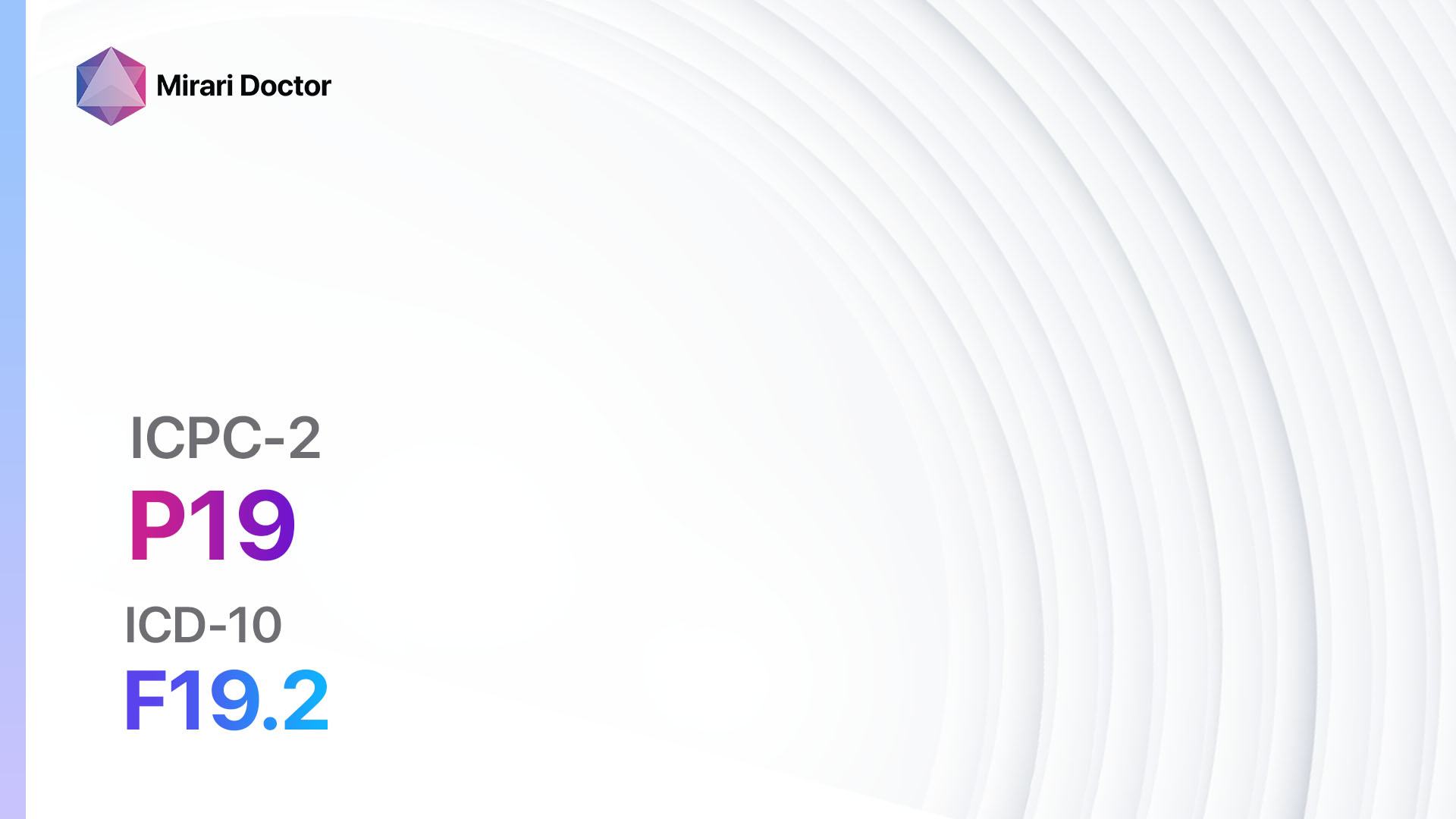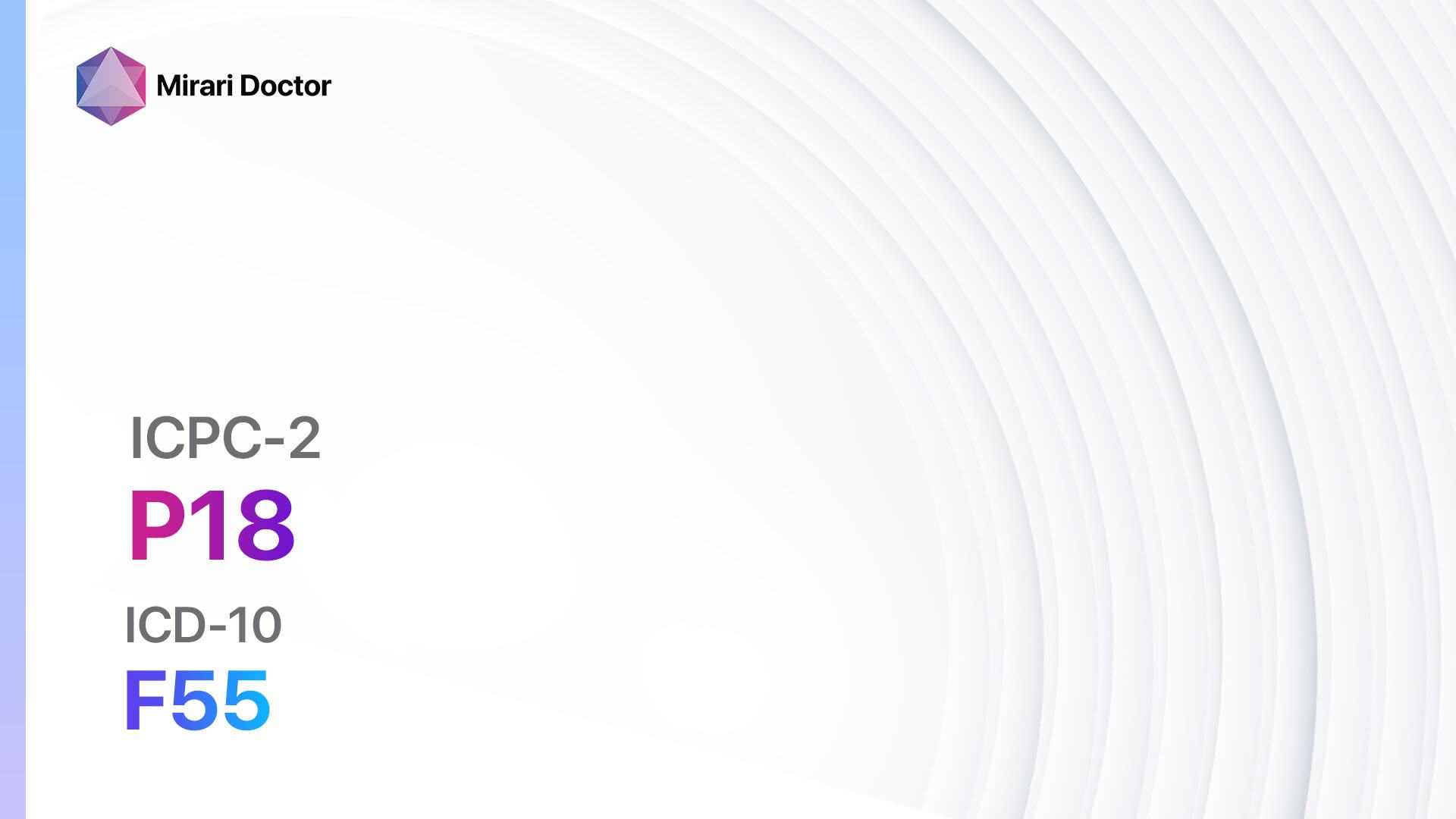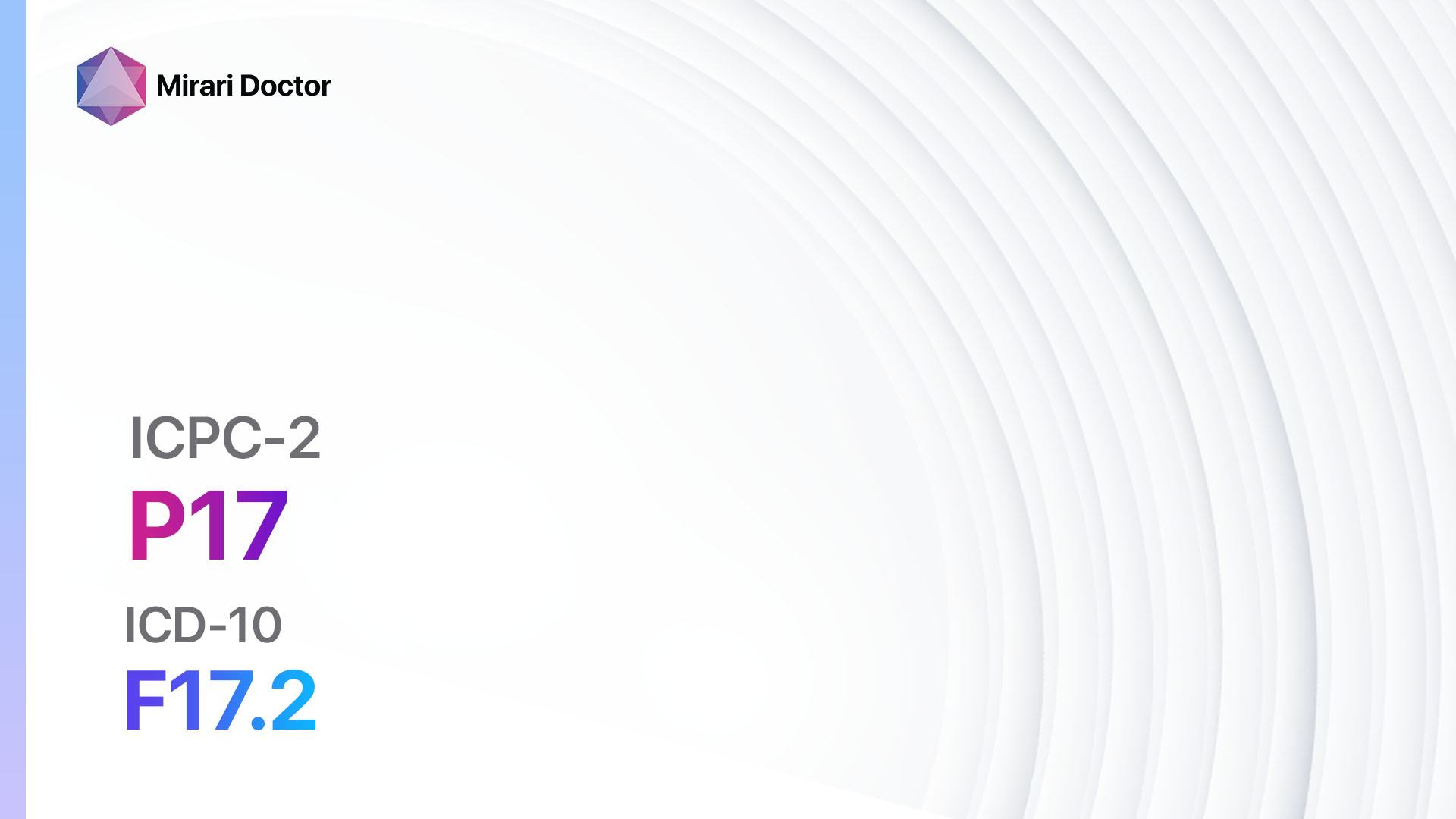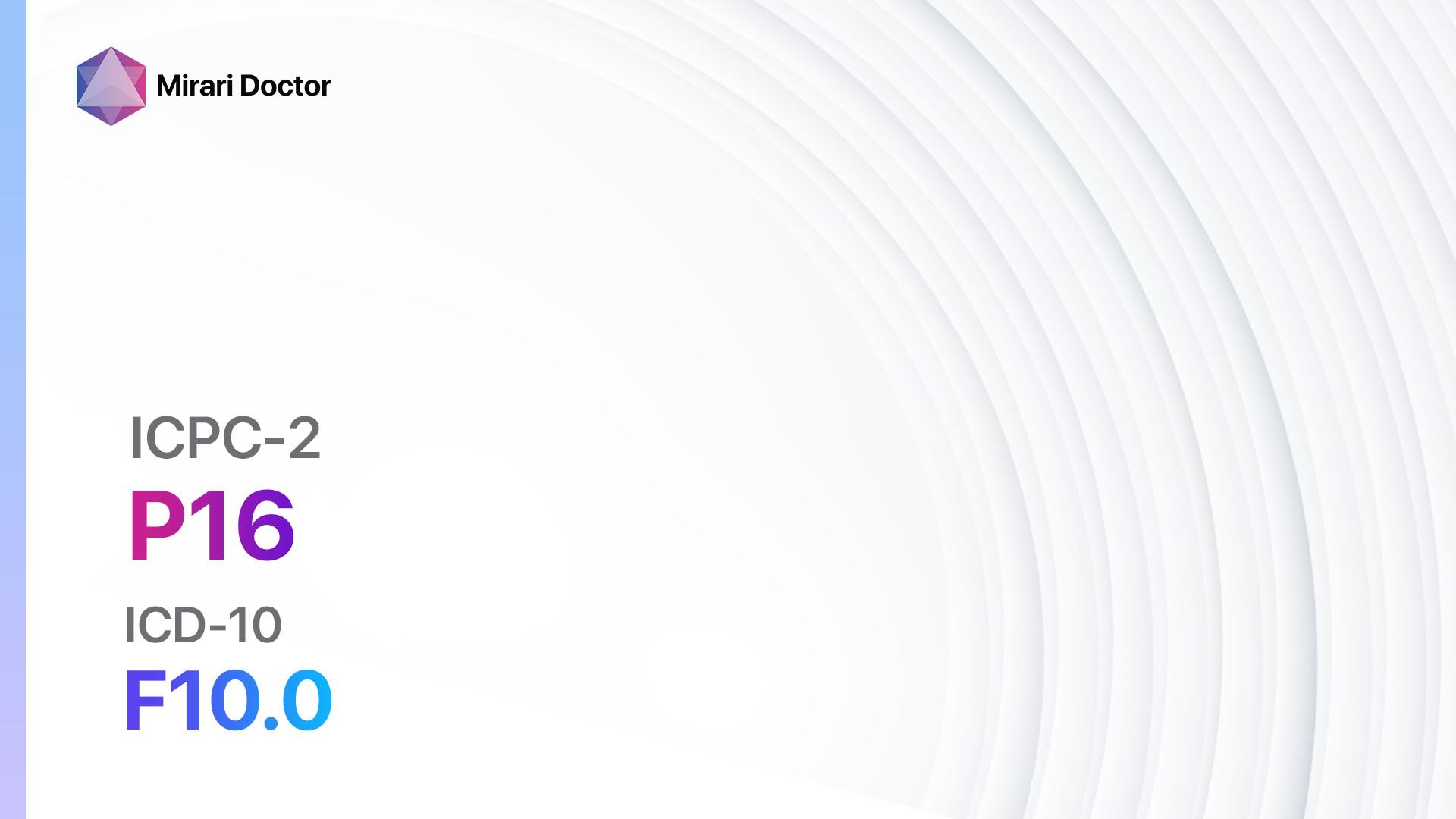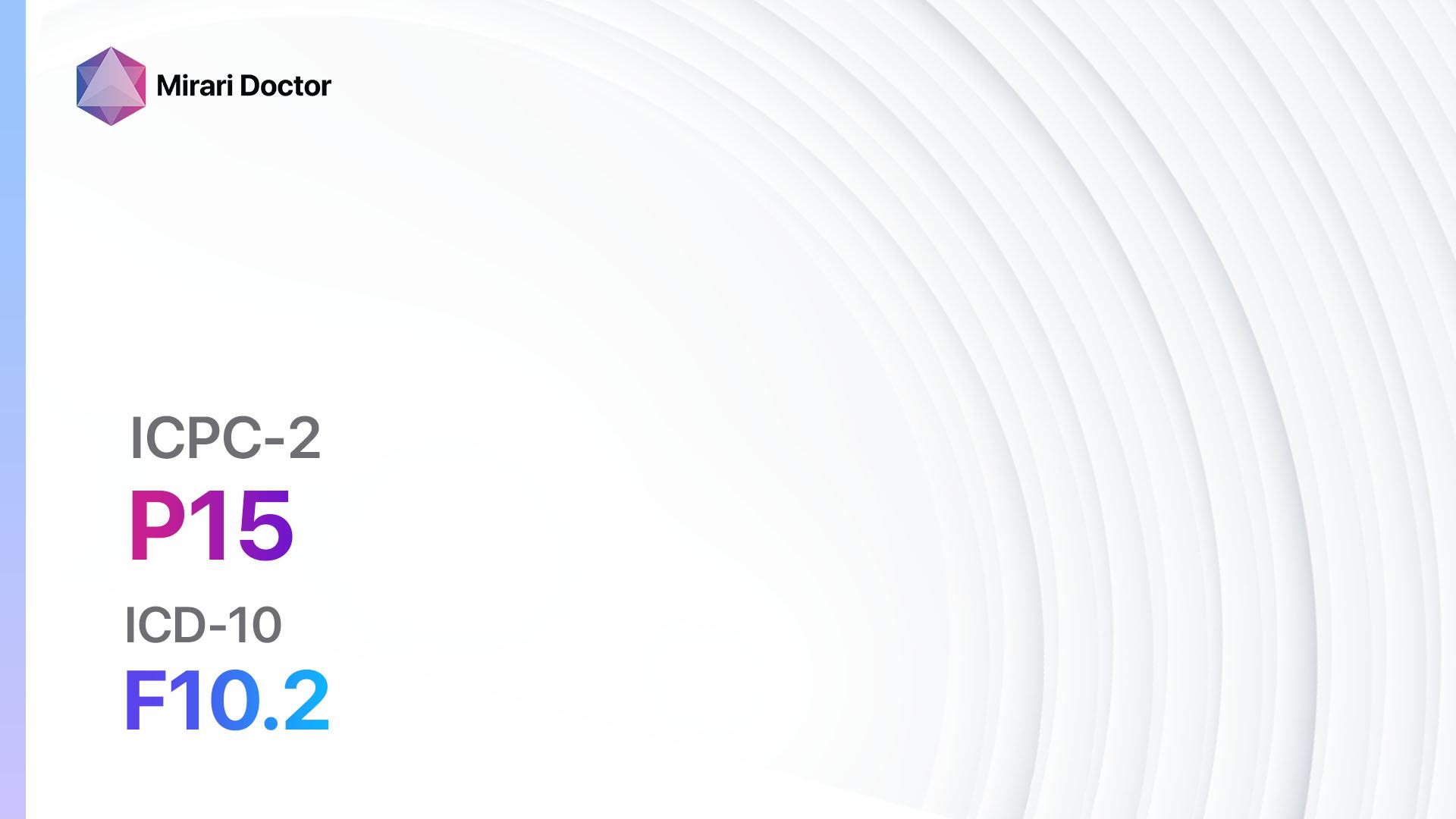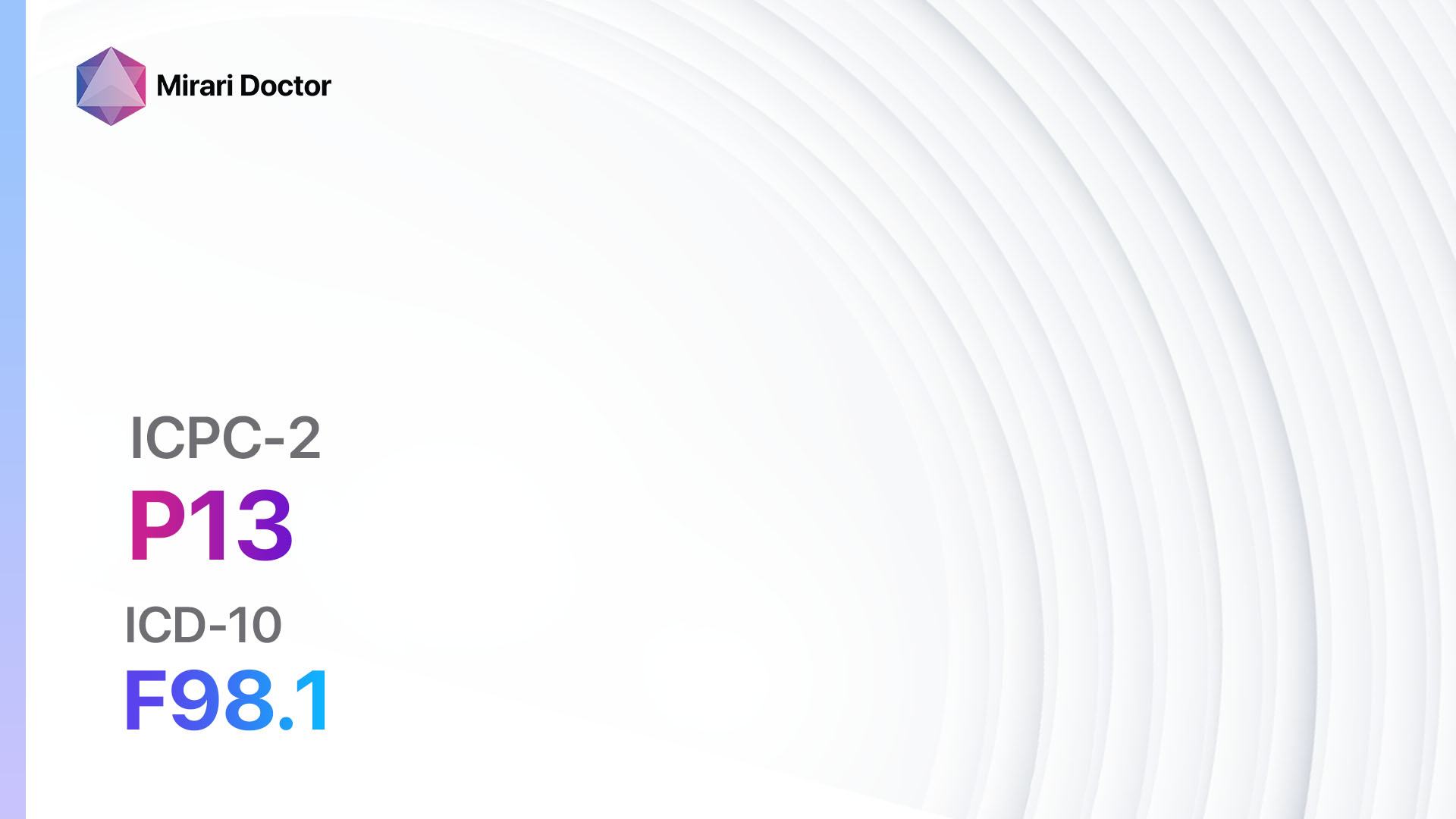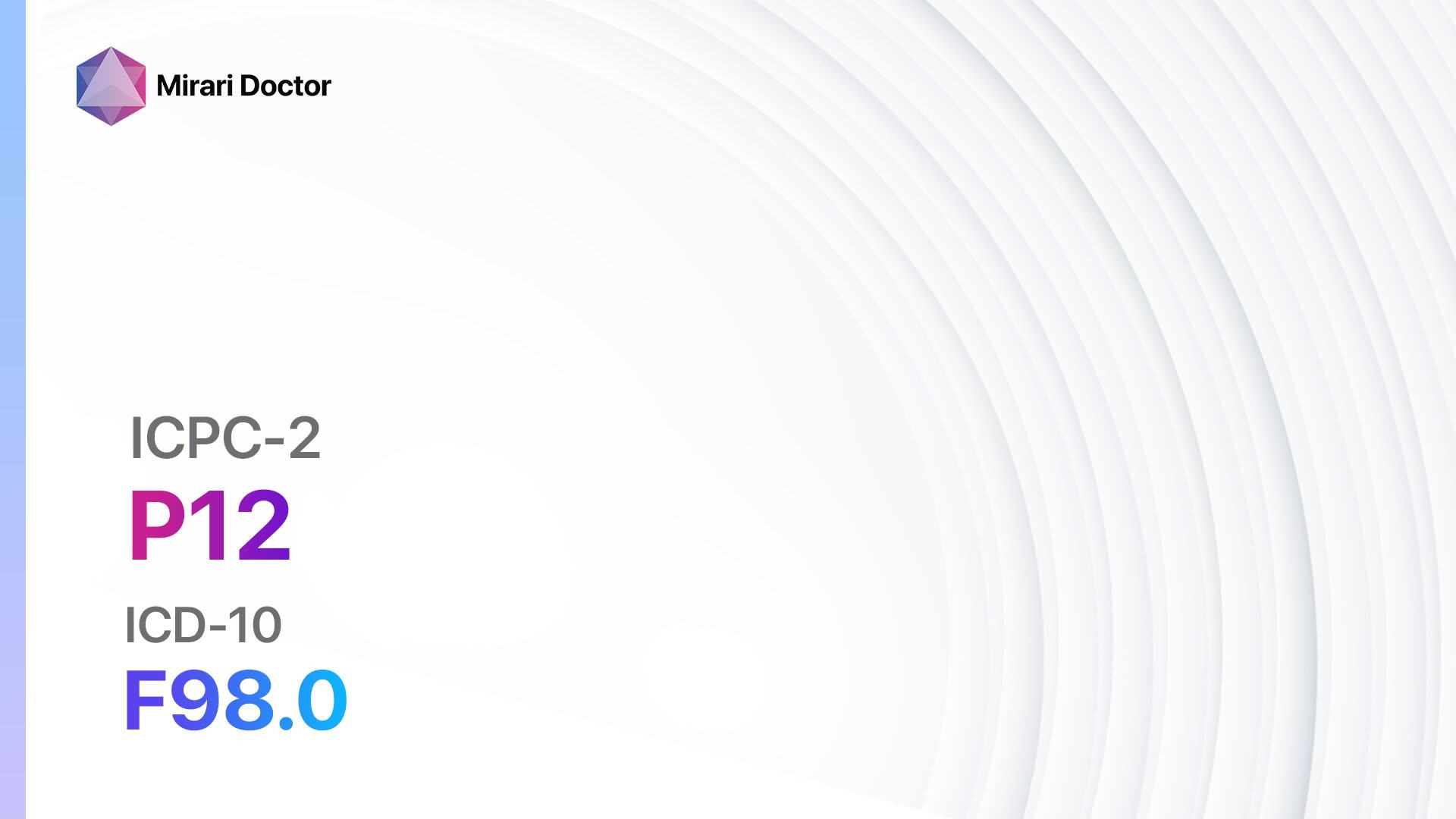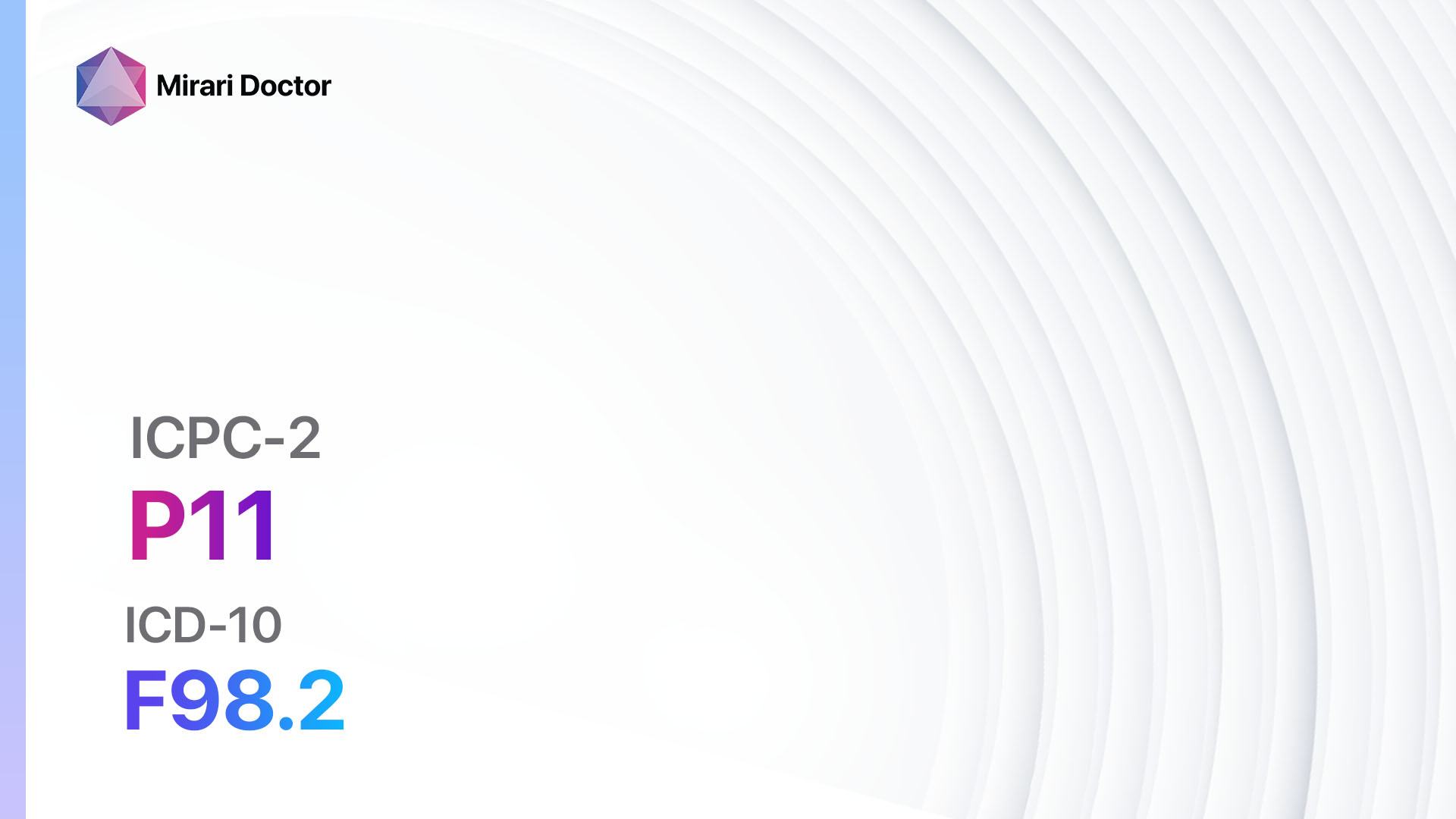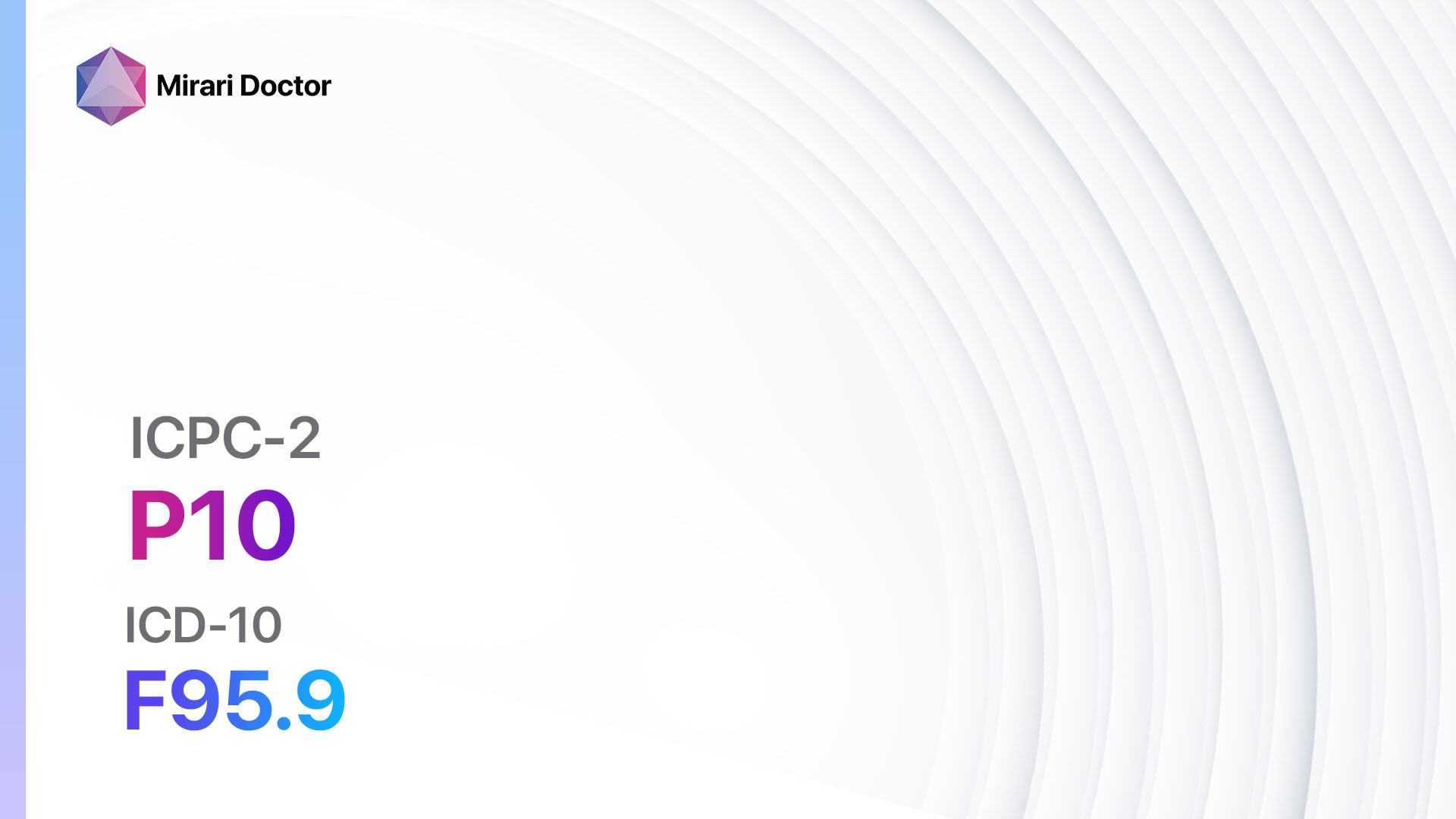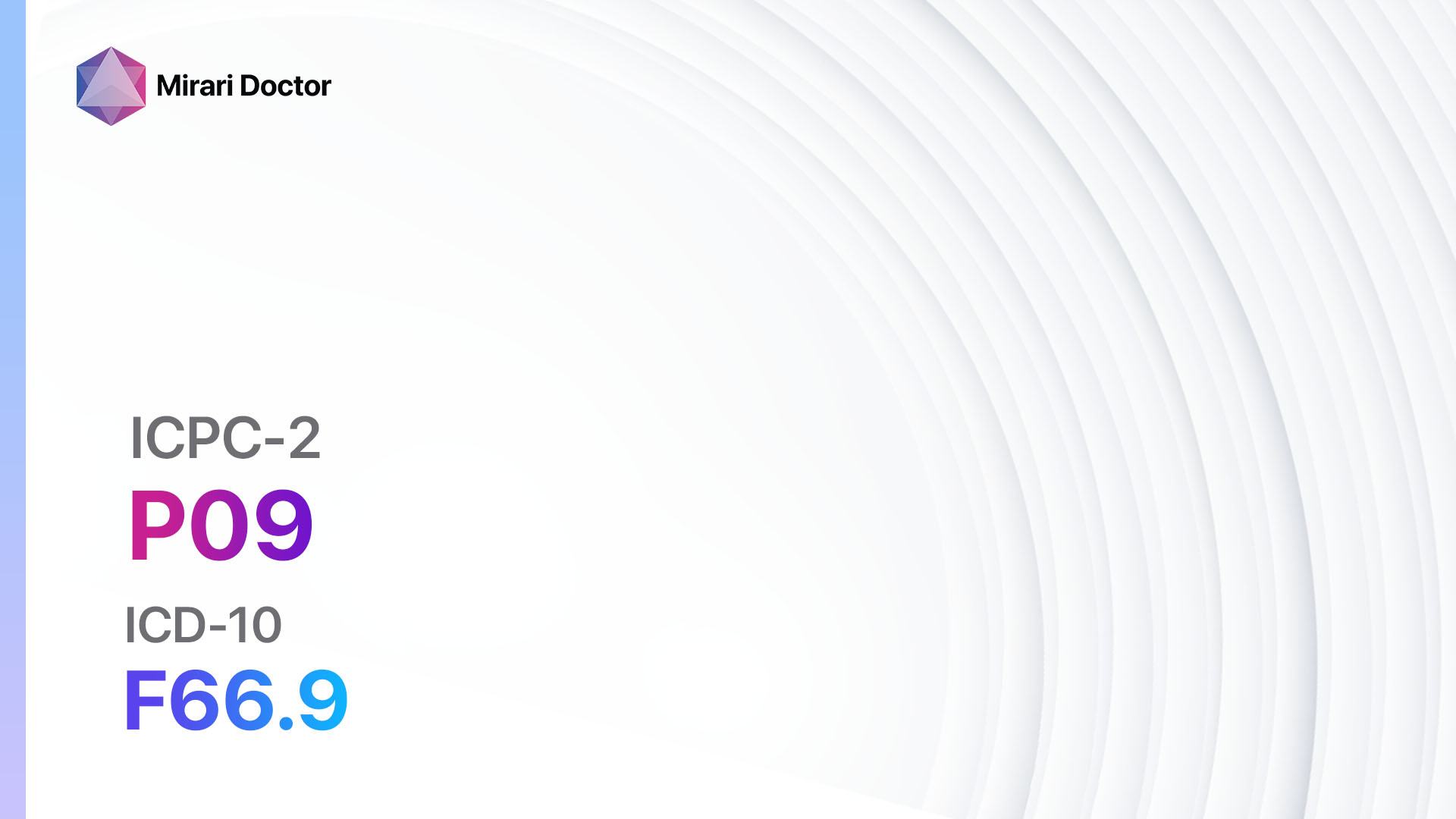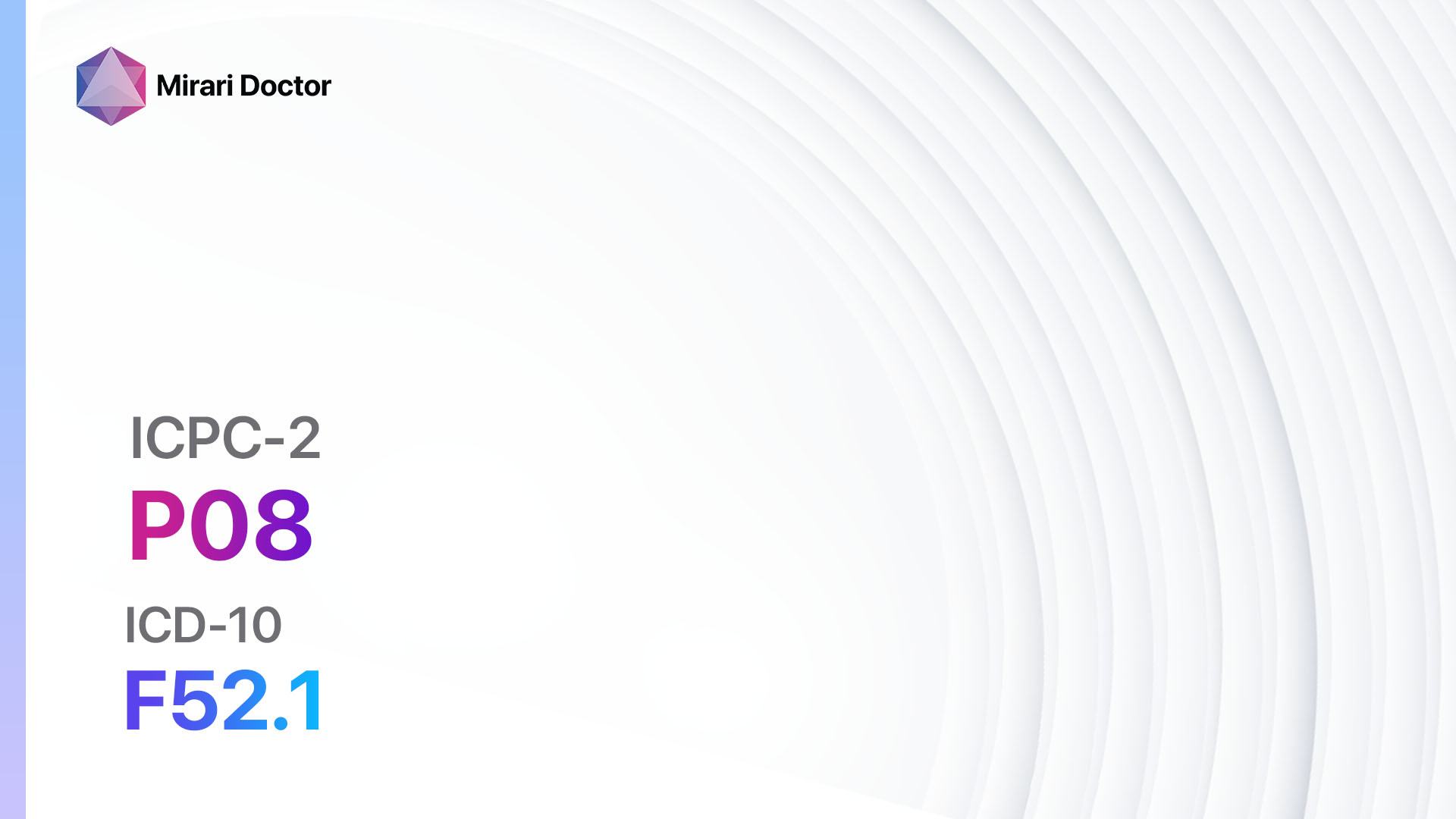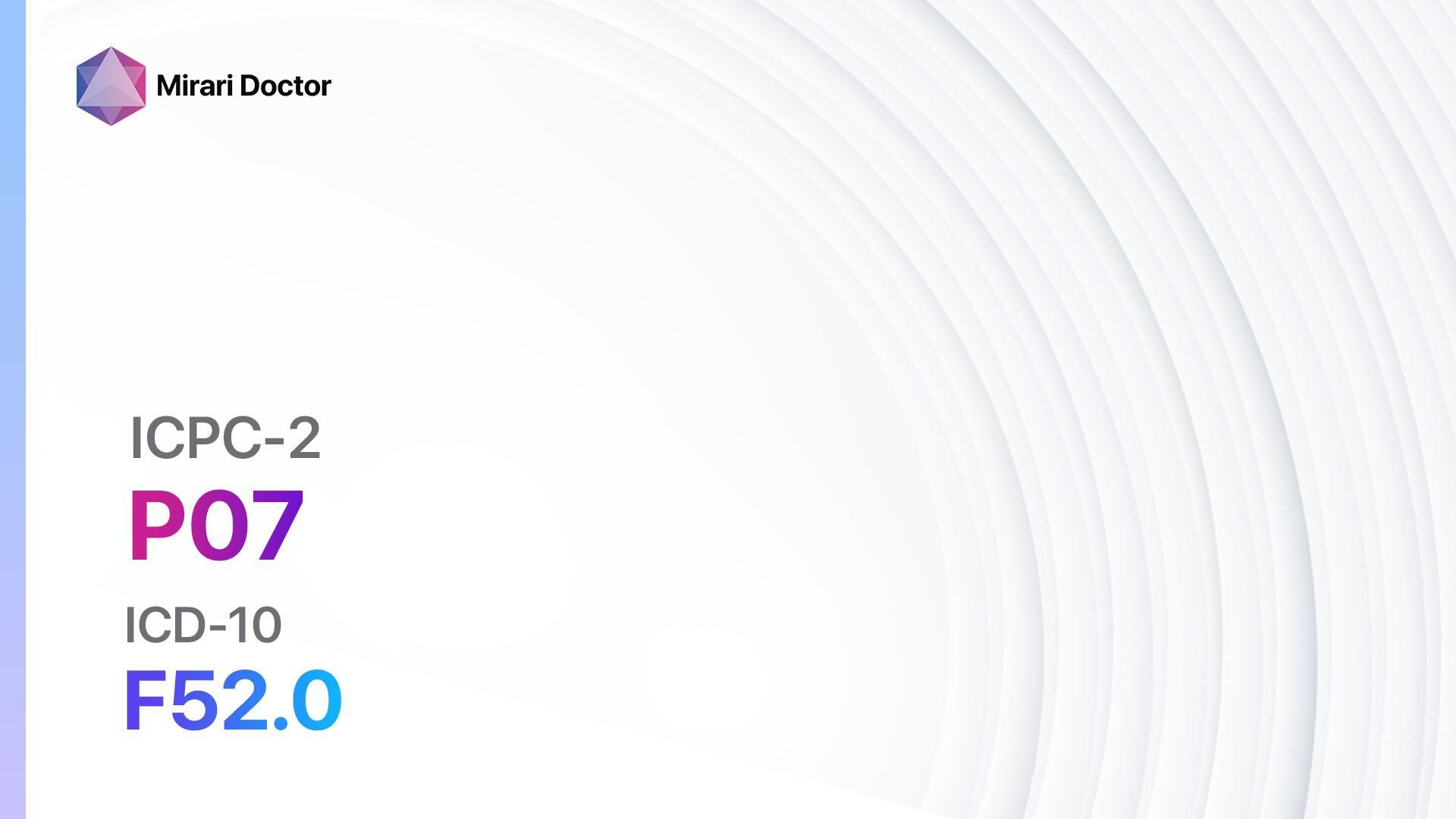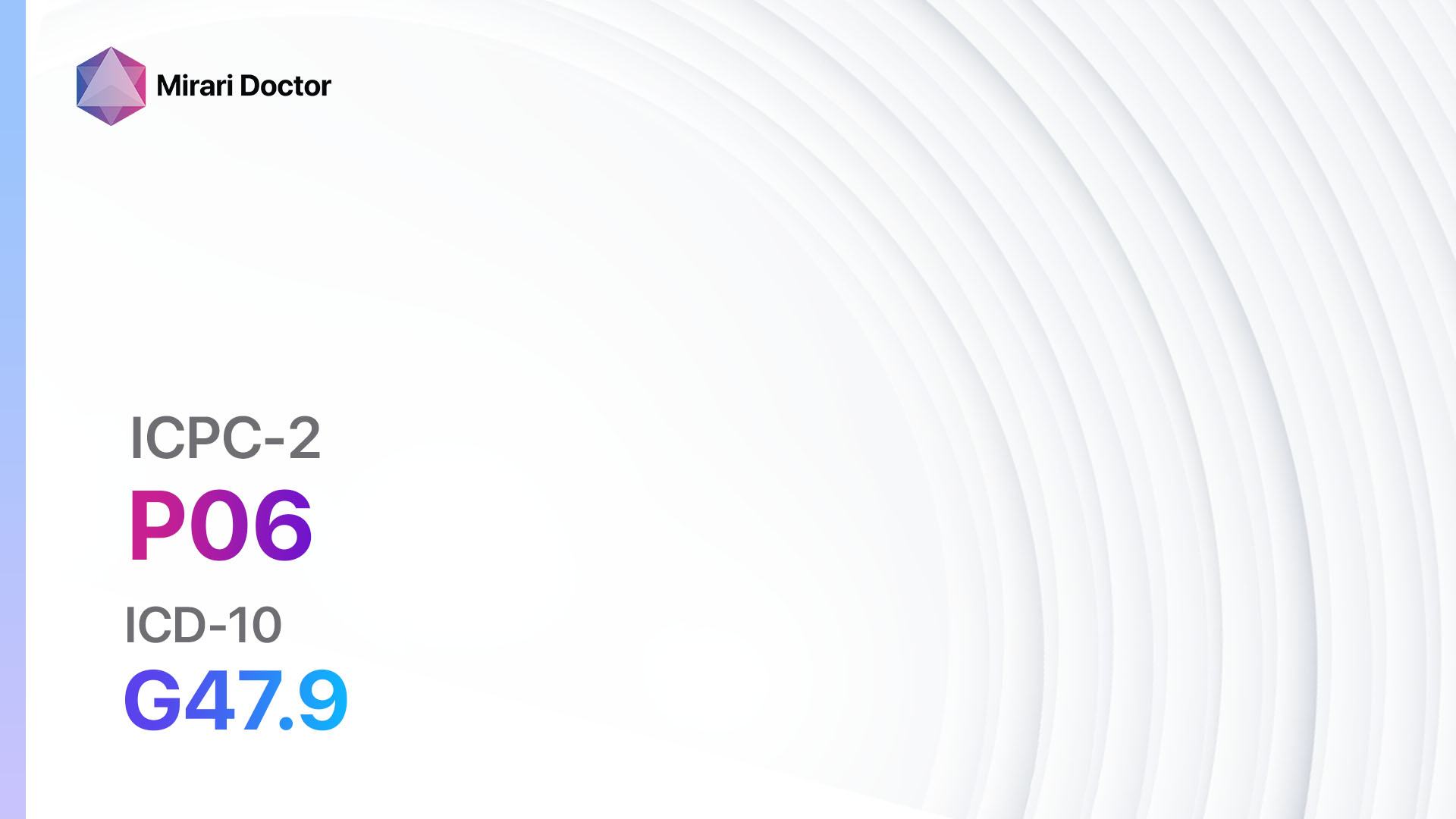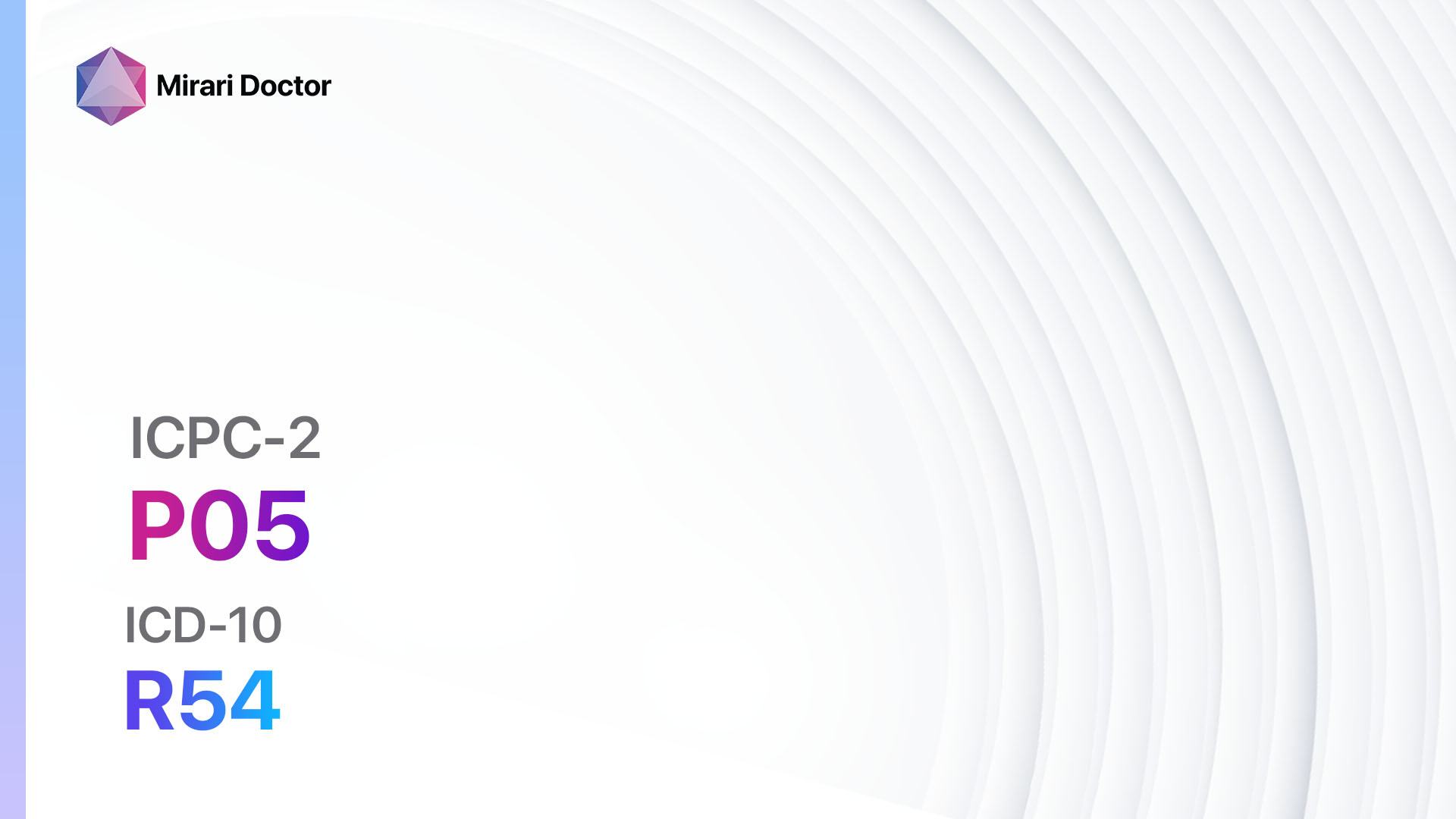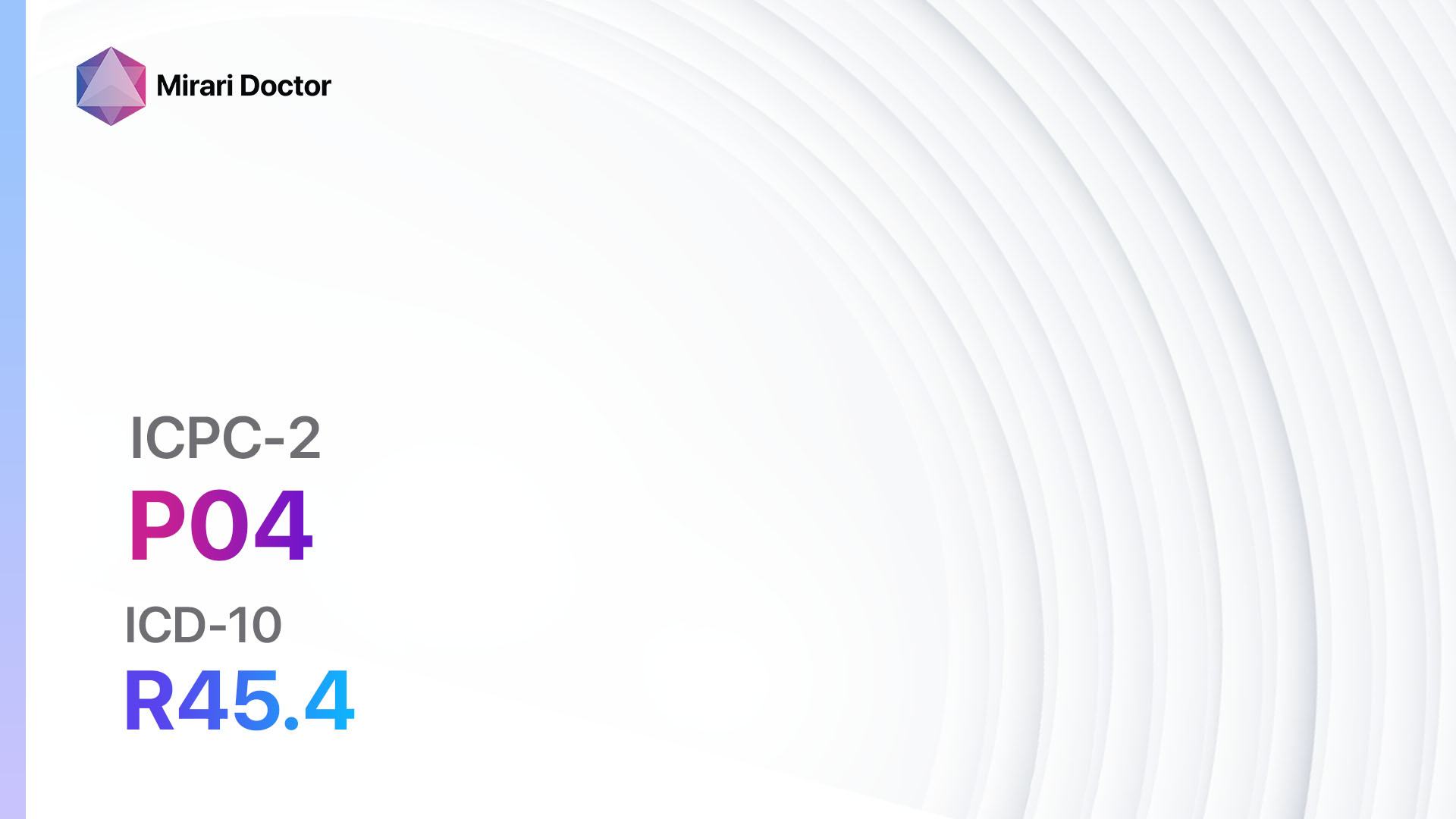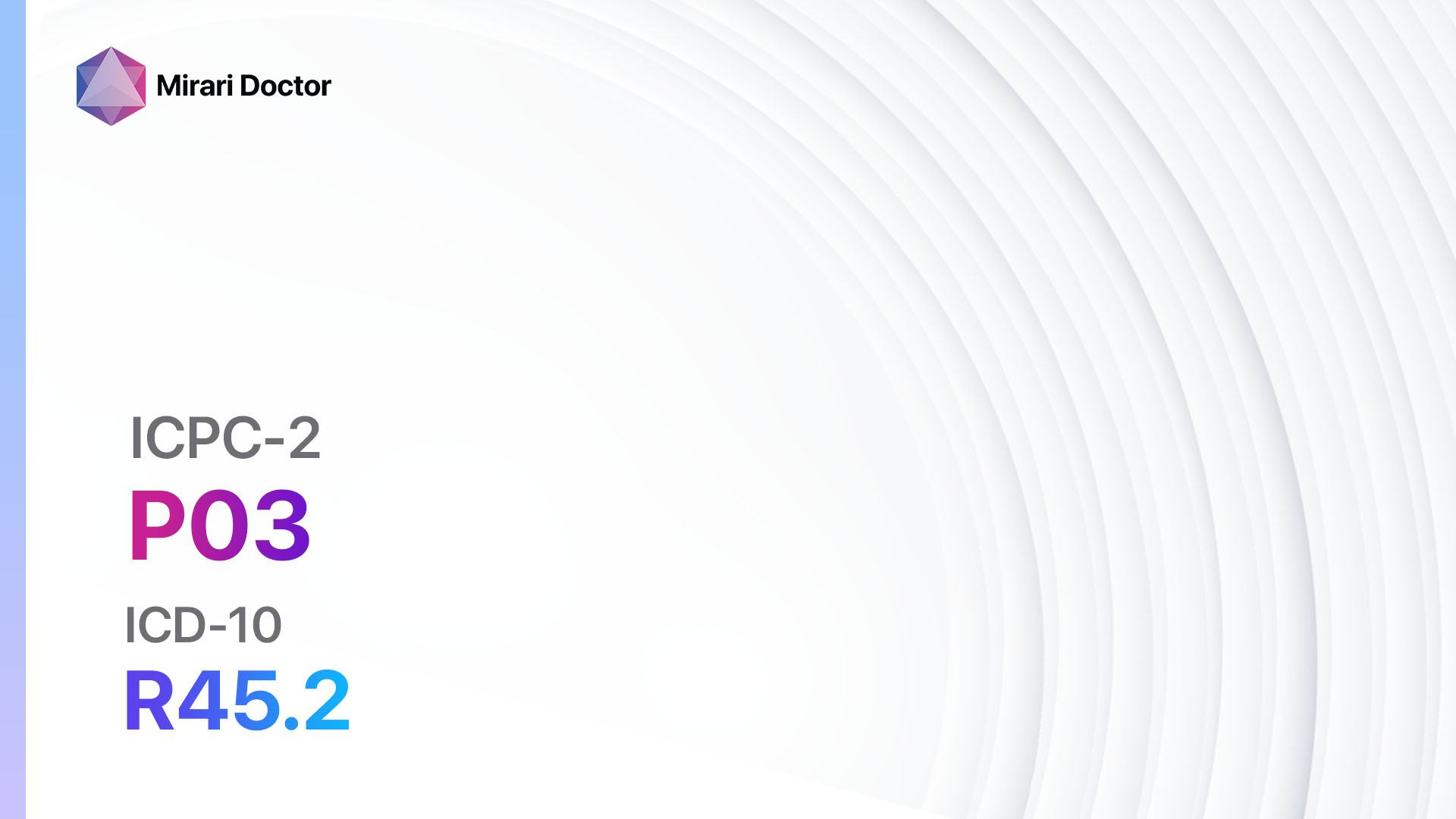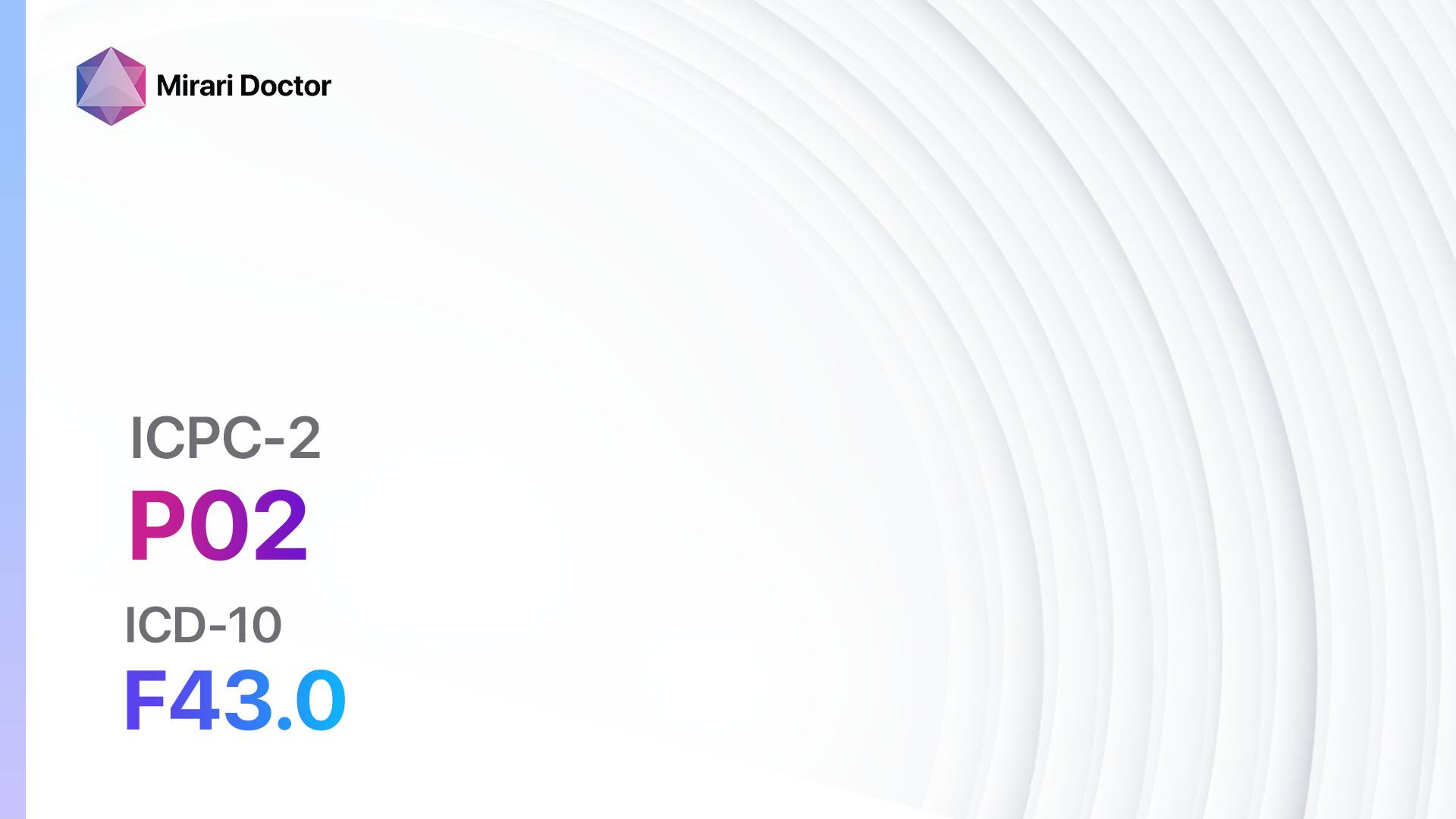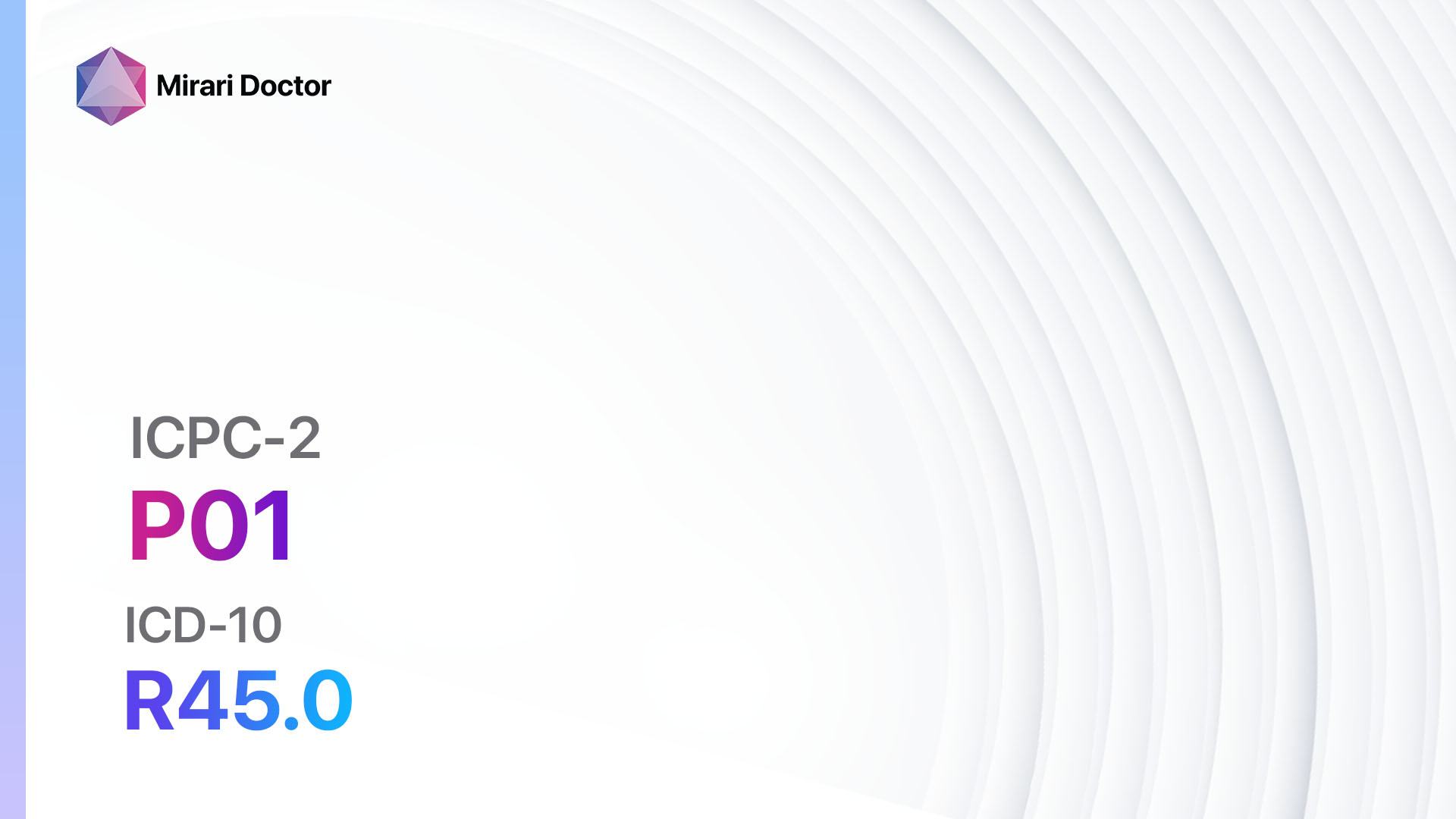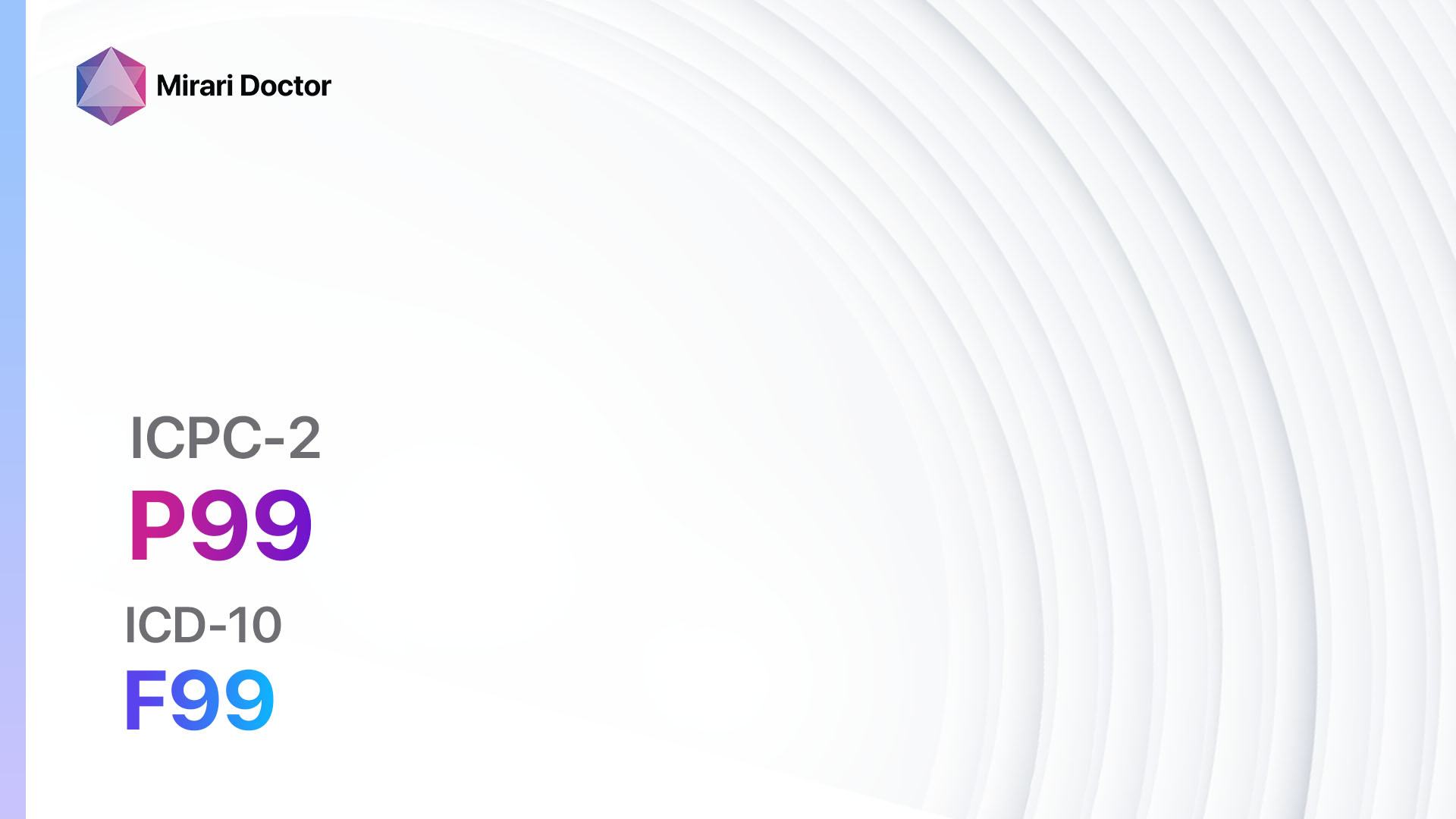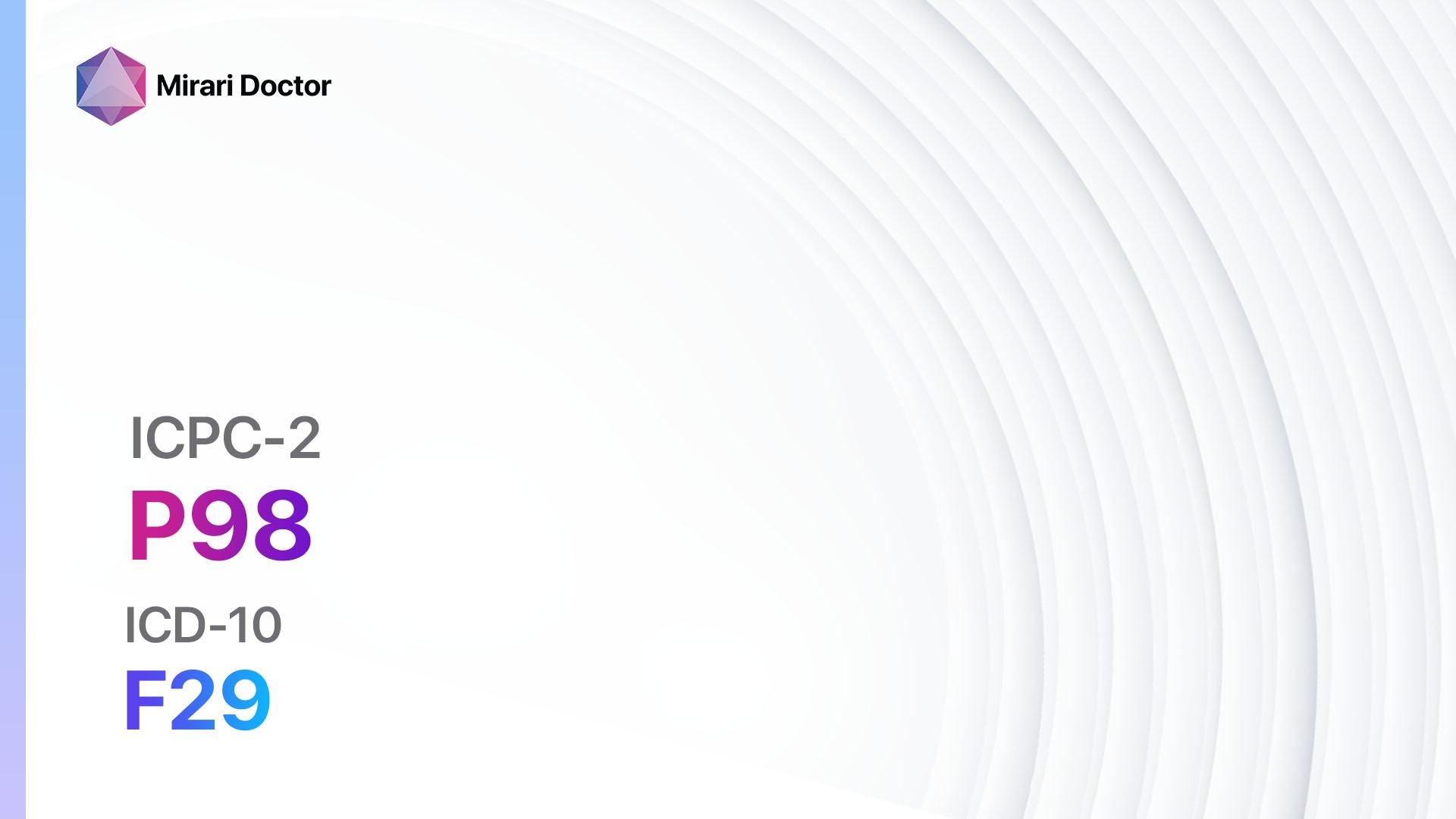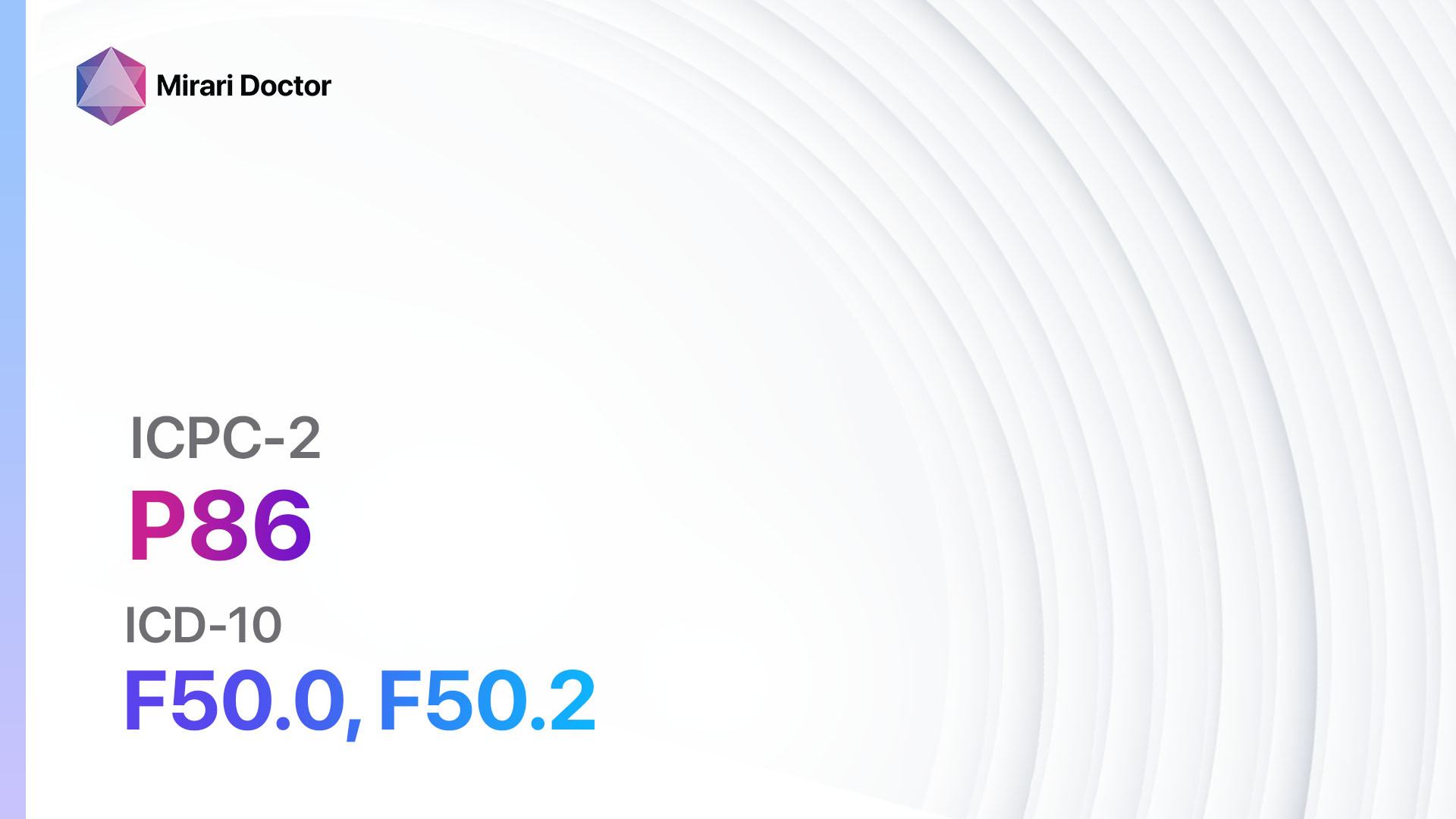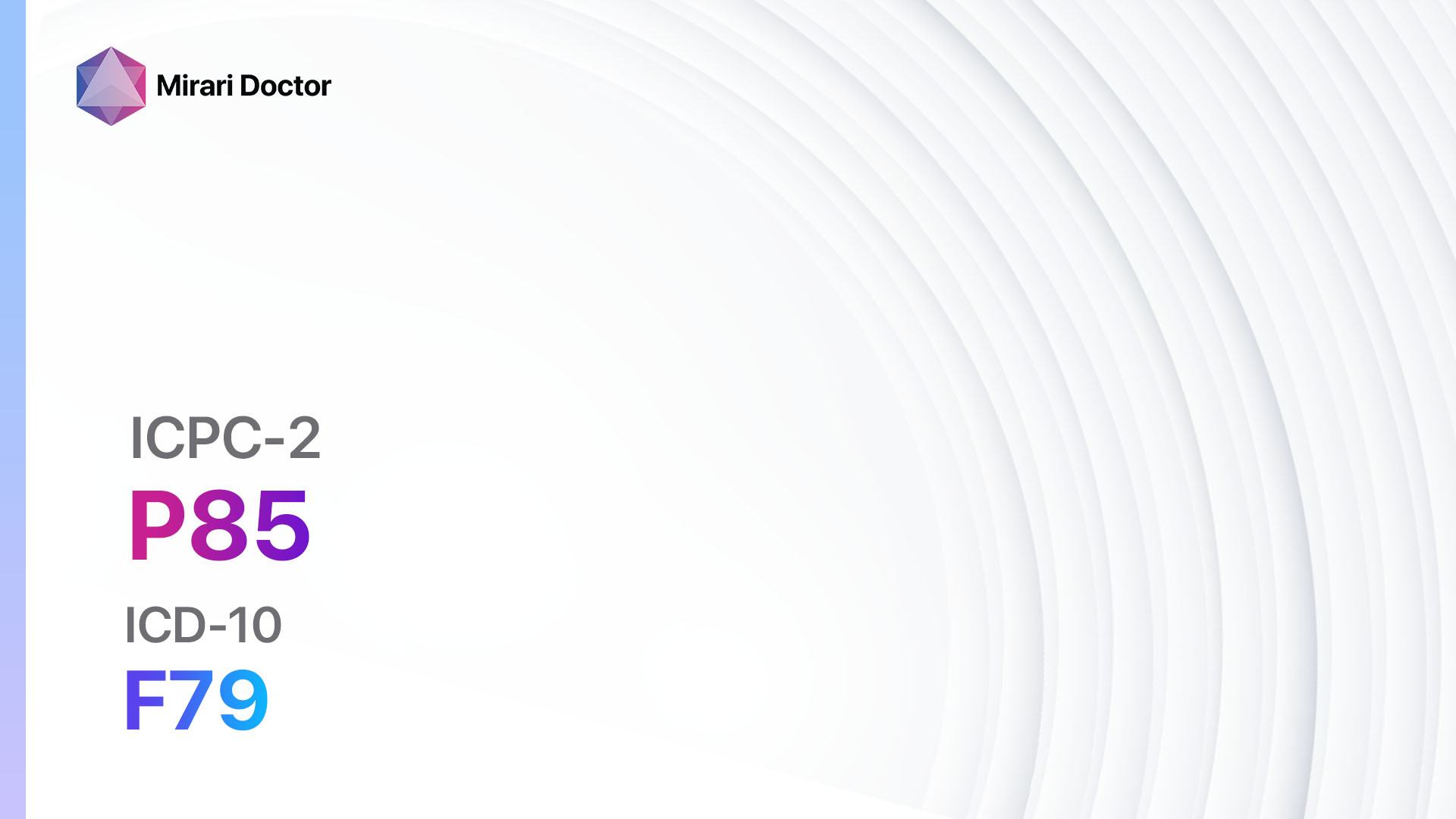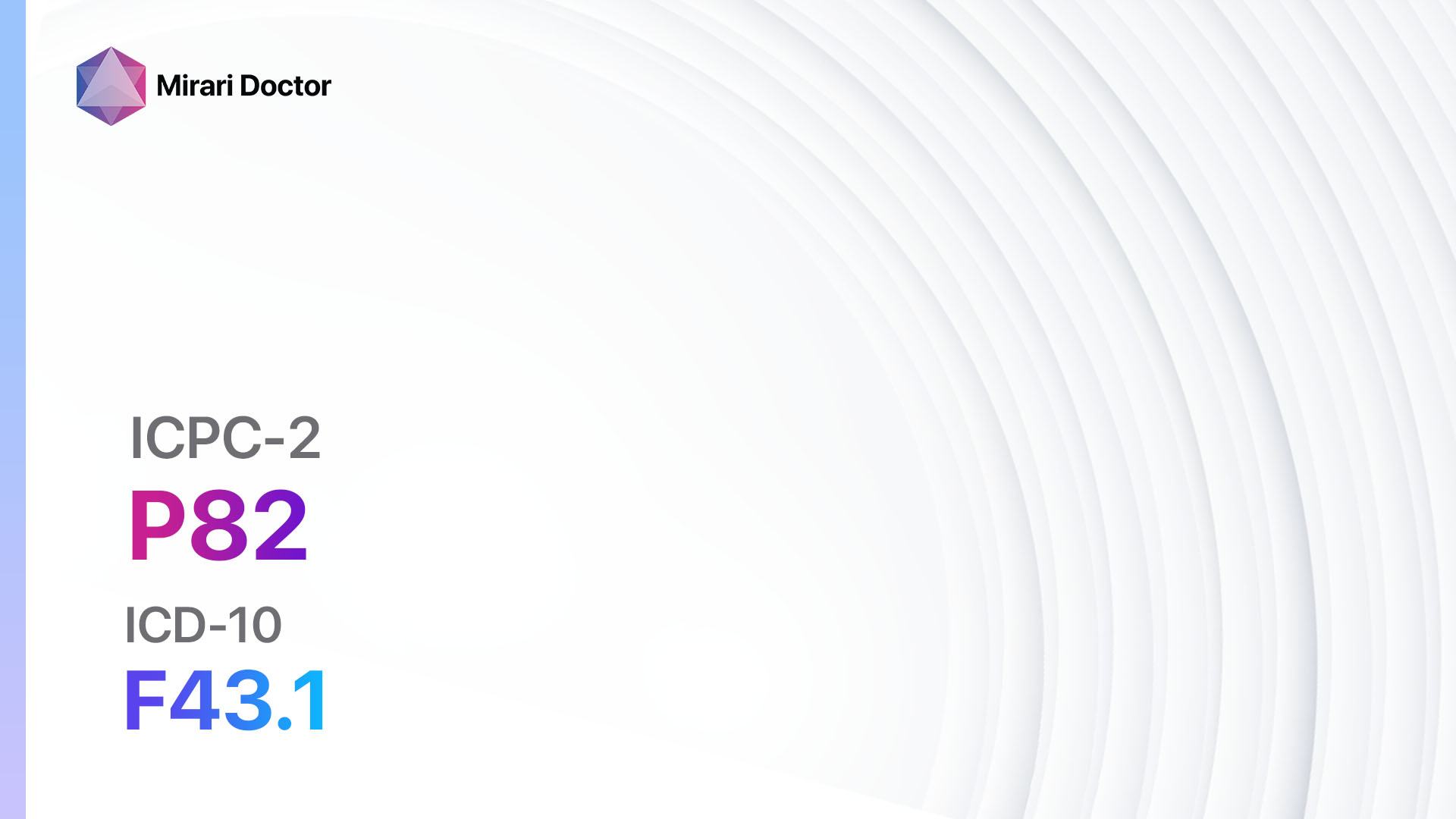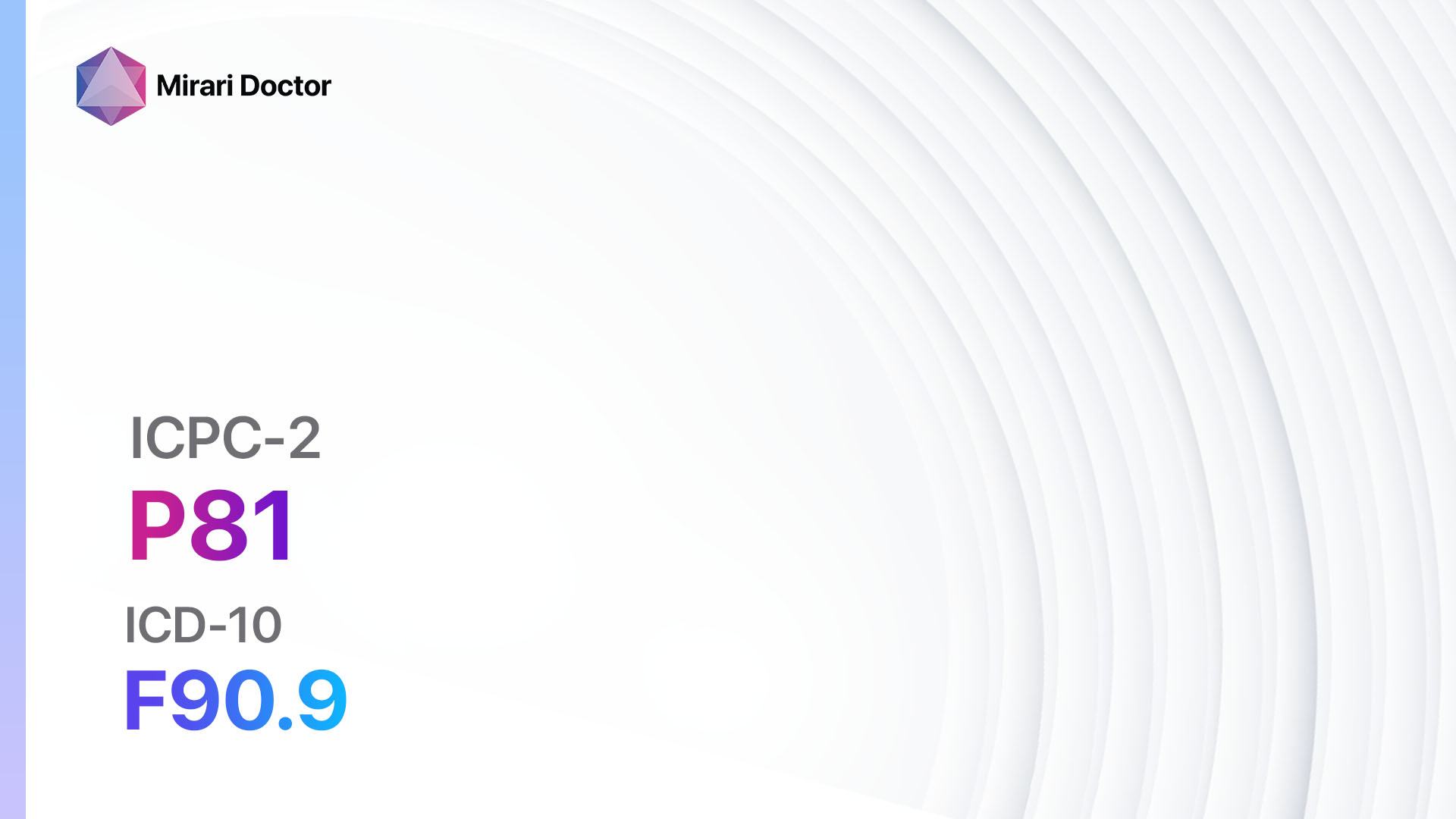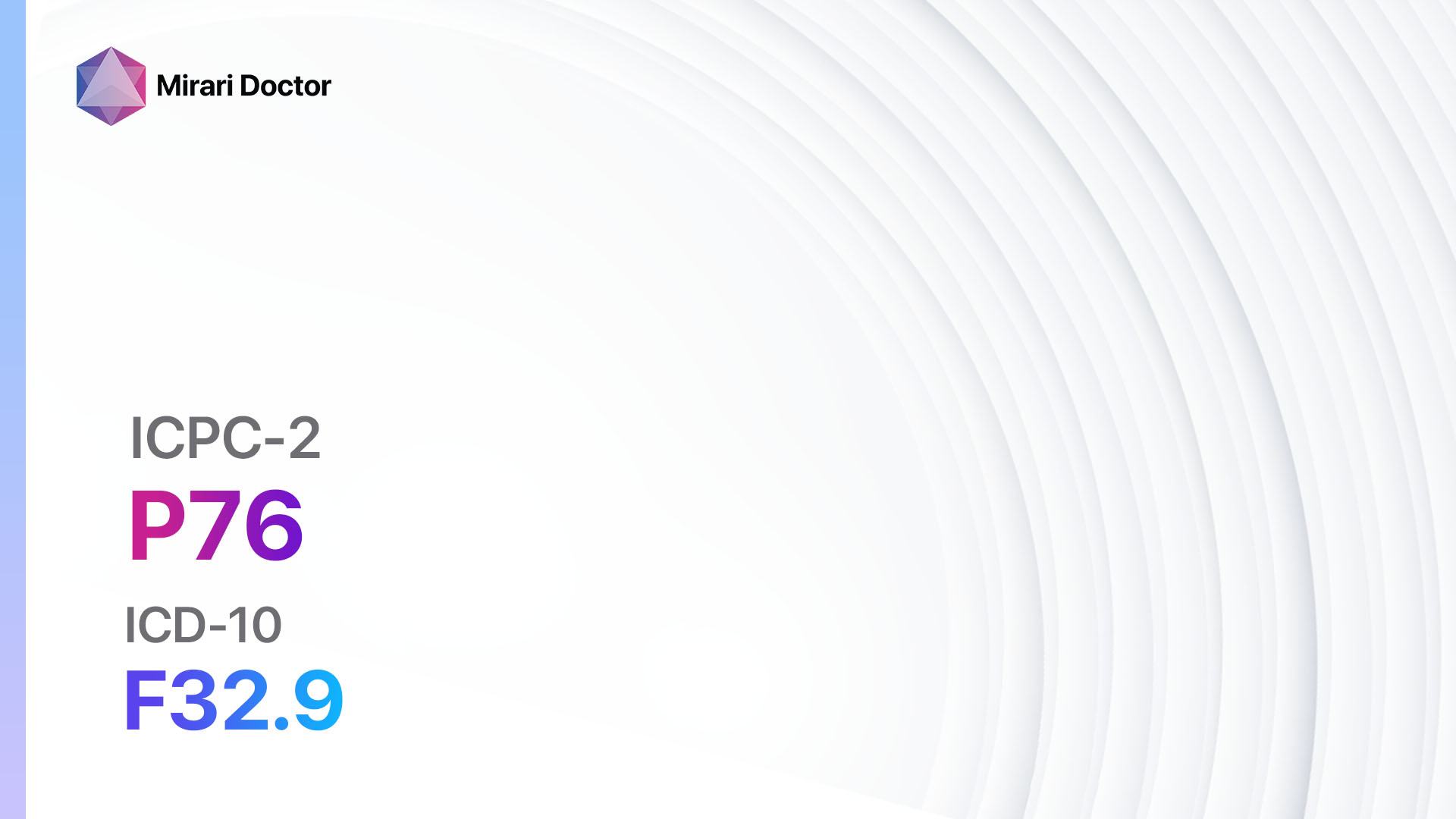
Introduction
Depressive disorder, also known as major depressive disorder or clinical depression, is a common mental health condition characterized by persistent feelings of sadness, loss of interest or pleasure in activities, and a range of physical and emotional symptoms[1]. It is a significant condition that can have a profound impact on a person’s daily functioning and quality of life[2]. The aim of this guide is to provide healthcare professionals with a comprehensive overview of the diagnostic steps, possible interventions, and patient education strategies for managing depressive disorder.
Codes
Symptoms
- Persistent feelings of sadness, emptiness, or hopelessness[3]
- Loss of interest or pleasure in activities once enjoyed[4]
- Changes in appetite and weight (either significant weight loss or weight gain)[5]
- Sleep disturbances (insomnia or excessive sleeping)[6]
- Fatigue or loss of energy[7]
- Feelings of worthlessness or excessive guilt[8]
- Difficulty concentrating, making decisions, or remembering things[9]
- Restlessness or slowed movements[10]
- Recurrent thoughts of death or suicide
Causes
The exact cause of depressive disorder is unknown, but it is believed to be a combination of genetic, biological, environmental, and psychological factors. Some potential causes include:
- Family history of depression or other mental health disorders
- Imbalance of certain chemicals in the brain, such as serotonin and norepinephrine
- Hormonal changes, such as those occurring during pregnancy or menopause
- Chronic medical conditions, such as diabetes, heart disease, or cancer
- Substance abuse or addiction
- Traumatic or stressful life events, such as the loss of a loved one or a difficult relationship
- Certain medications, such as corticosteroids or beta-blockers
Diagnostic Steps
Medical History
- Conduct a comprehensive medical history to gather relevant patient information, including risk factors, medical conditions, and symptoms related to the disease.
- Ask about the duration, severity, and frequency of depressive symptoms.
- Inquire about any previous episodes of depression or other mental health disorders.
- Assess for any family history of depression or other mental health disorders.
- Evaluate for any recent traumatic or stressful life events.
- Screen for substance abuse or addiction.
Physical Examination
- Perform a thorough physical examination, focusing on specific signs or findings indicative of disease.
- Assess vital signs, including blood pressure, heart rate, and temperature.
- Examine the patient’s overall appearance, including any changes in weight or hygiene.
- Check for any physical symptoms associated with depression, such as slowed movements or psychomotor agitation.
- Evaluate for any physical conditions that may be contributing to or exacerbating depressive symptoms, such as chronic pain or thyroid dysfunction.
Laboratory Tests
- There are no specific laboratory tests to diagnose depressive disorder. However, certain tests may be ordered to rule out other medical conditions that may mimic or contribute to depressive symptoms.
- Complete blood count (CBC) to assess for anemia or other blood disorders.
- Thyroid function tests to evaluate for thyroid dysfunction.
- Basic metabolic panel (BMP) to assess for any electrolyte imbalances or organ dysfunction.
- Urinalysis to rule out urinary tract infections or other urinary abnormalities.
- Drug screening to identify any substance abuse or addiction.
Diagnostic Imaging
- Diagnostic imaging is not typically used in the diagnosis of depressive disorder. However, in some cases, imaging studies may be ordered to rule out other medical conditions or to assess for any structural abnormalities in the brain.
- Magnetic resonance imaging (MRI) to evaluate for any brain tumors, strokes, or other structural abnormalities.
- Computed tomography (CT) scan to assess for any brain injuries or bleeding.
- Positron emission tomography (PET) scan to measure brain activity and identify any abnormalities.
Other Tests
- There are no other specific diagnostic tests for depressive disorder. However, additional assessments may be necessary based on the clinical presentation and individual patient needs.
- Psychological assessments, such as the Beck Depression Inventory (BDI) or the Hamilton Rating Scale for Depression (HAM-D), may be used to assess the severity of depressive symptoms.
- Referral to a psychiatrist or mental health professional for a comprehensive psychiatric evaluation may be warranted.
Follow-up and Patient Education
- Schedule regular follow-up appointments to monitor the patient’s progress and adjust treatment as needed.
- Provide education to the patient and their family about depressive disorder, including the nature of the condition, treatment options, and strategies for self-care.
- Encourage the patient to engage in therapy or counseling to address underlying psychological factors contributing to depressive symptoms.
- Emphasize the importance of medication adherence and the potential for side effects.
- Discuss lifestyle modifications, such as regular exercise, healthy eating, and stress management techniques, that can support overall mental health and well-being.
Possible Interventions
Traditional Interventions
Medications:
Top 5 drugs for Depressive disorder:
- Selective serotonin reuptake inhibitors (SSRIs) (e.g., Fluoxetine, Sertraline, Escitalopram):
- Cost: Generic versions can be $3-$50/month.
- Contraindications: Hypersensitivity to SSRIs, concurrent use of monoamine oxidase inhibitors (MAOIs).
- Side effects: Nausea, headache, insomnia.
- Severe side effects: Serotonin syndrome, suicidal thoughts or behavior.
- Drug interactions: MAOIs, certain medications metabolized by the cytochrome P450 system.
- Warning: Increased risk of suicidal thoughts or behavior in children, adolescents, and young adults.
- Serotonin-norepinephrine reuptake inhibitors (SNRIs) (e.g., Venlafaxine, Duloxetine):
- Cost: Generic versions can be $10-$100/month.
- Contraindications: Hypersensitivity to SNRIs, concurrent use of MAOIs.
- Side effects: Nausea, dizziness, dry mouth.
- Severe side effects: Serotonin syndrome, increased blood pressure.
- Drug interactions: MAOIs, certain medications metabolized by the cytochrome P450 system.
- Warning: Increased risk of suicidal thoughts or behavior in children, adolescents, and young adults.
- Tricyclic antidepressants (TCAs) (e.g., Amitriptyline, Nortriptyline):
- Cost: Generic versions can be $10-$50/month.
- Contraindications: Hypersensitivity to TCAs, recent myocardial infarction, concurrent use of MAOIs.
- Side effects: Dry mouth, constipation, blurred vision.
- Severe side effects: Cardiac arrhythmias, seizures.
- Drug interactions: MAOIs, certain medications metabolized by the cytochrome P450 system.
- Warning: Increased risk of suicidal thoughts or behavior in children, adolescents, and young adults.
- Bupropion:
- Cost: Generic versions can be $10-$50/month.
- Contraindications: Seizure disorder, eating disorder, concurrent use of MAOIs.
- Side effects: Insomnia, dry mouth, headache.
- Severe side effects: Seizures, allergic reactions.
- Drug interactions: MAOIs, certain medications metabolized by the cytochrome P450 system.
- Warning: Increased risk of suicidal thoughts or behavior in children, adolescents, and young adults.
- Mirtazapine:
- Cost: Generic versions can be $10-$50/month.
- Contraindications: Hypersensitivity to mirtazapine, concurrent use of MAOIs.
- Side effects: Sedation, increased appetite, weight gain.
- Severe side effects: Serotonin syndrome, agranulocytosis.
- Drug interactions: MAOIs, certain medications metabolized by the cytochrome P450 system.
- Warning: Increased risk of suicidal thoughts or behavior in children, adolescents, and young adults.
Alternative Drugs:
- Atypical antipsychotics (e.g., Aripiprazole, Quetiapine): Used as adjunctive therapy for treatment-resistant depression.
- Monoamine oxidase inhibitors (MAOIs) (e.g., Phenelzine, Tranylcypromine): Reserved for treatment-resistant depression due to dietary and drug interactions.
- Electroconvulsive therapy (ECT): Considered for severe or treatment-resistant depression.
Psychotherapy:
- Cognitive-behavioral therapy (CBT): Focuses on identifying and changing negative thought patterns and behaviors.
- Interpersonal therapy (IPT): Focuses on improving interpersonal relationships and resolving conflicts.
- Psychodynamic therapy: Explores unconscious thoughts and emotions to gain insight into depressive symptoms.
- Group therapy: Provides support and encouragement from peers experiencing similar challenges.
Alternative Interventions
- Acupuncture: May help alleviate depressive symptoms by stimulating specific points on the body. Cost: $60-$120 per session.
- Yoga and meditation: Can promote relaxation, reduce stress, and improve overall well-being. Cost: Varies depending on the location and type of classes.
- Herbal supplements: Some herbal supplements, such as St. John’s wort and S-adenosylmethionine (SAMe), have shown potential benefits for mild to moderate depression. Cost: Varies depending on the specific supplement.
- Exercise therapy: Regular physical activity has been shown to improve mood and reduce symptoms of depression. Cost: Varies depending on the type of exercise and location.
- Light therapy: Exposure to bright light, especially in the morning, can help regulate circadian rhythms and improve mood. Cost: $50-$200 for a light therapy box.
Lifestyle Interventions
- Healthy diet: Encourage a balanced diet rich in fruits, vegetables, whole grains, and lean proteins. Limit processed foods, sugary snacks, and caffeine.
- Regular exercise: Engaging in physical activity for at least 30 minutes most days of the week can help improve mood and reduce symptoms of depression.
- Adequate sleep: Encourage a consistent sleep schedule and good sleep hygiene practices, such as avoiding electronic devices before bed and creating a relaxing bedtime routine.
- Stress management techniques: Teach stress reduction techniques, such as deep breathing exercises, mindfulness meditation, and relaxation techniques.
- Social support: Encourage the patient to maintain social connections and engage in activities they enjoy with supportive friends and family members.
It is important to note that the cost ranges provided are approximate and may vary depending on the location and availability of the interventions.
Mirari Cold Plasma Alternative Intervention
Understanding Mirari Cold Plasma
- Safe and Non-Invasive Treatment: Mirari Cold Plasma is a safe and non-invasive treatment option for various skin conditions. It does not require incisions, minimizing the risk of scarring, bleeding, or tissue damage.
- Efficient Extraction of Foreign Bodies: Mirari Cold Plasma facilitates the removal of foreign bodies from the skin by degrading and dissociating organic matter, allowing easier access and extraction.
- Pain Reduction and Comfort: Mirari Cold Plasma has a local analgesic effect, providing pain relief during the treatment, making it more comfortable for the patient.
- Reduced Risk of Infection: Mirari Cold Plasma has antimicrobial properties, effectively killing bacteria and reducing the risk of infection.
- Accelerated Healing and Minimal Scarring: Mirari Cold Plasma stimulates wound healing and tissue regeneration, reducing healing time and minimizing the formation of scars.
Mirari Cold Plasma Prescription
Video instructions for using Mirari Cold Plasma Device – P76 Depressive disorder (ICD-10:F32.9)
| Mild | Moderate | Severe |
| Mode setting: 2 (Wound Healing) Location: 7 (Neuro system & ENT) Morning: 15 minutes, Evening: 15 minutes |
Mode setting: 2 (Wound Healing) Location: 7 (Neuro system & ENT) Morning: 30 minutes, Lunch: 30 minutes, Evening: 30 minutes |
Mode setting: 2 (Wound Healing) Location: 7 (Neuro system & ENT) Morning: 30 minutes, Lunch: 30 minutes, Evening: 30 minutes |
| Mode setting: 7 (Immunotherapy) Location: 1 (Sacrum) Morning: 15 minutes, Evening: 15 minutes |
Mode setting: 7 (Immunotherapy) Location: 1 (Sacrum) Morning: 30 minutes, Lunch: 30 minutes, Evening: 30 minutes |
Mode setting: 7 (Immunotherapy) Location: 1 (Sacrum) Morning: 30 minutes, Lunch: 30 minutes, Evening: 30 minutes |
| Total Morning: 30 minutes approx. $5 USD, Evening: 30 minutes approx. $5 USD |
Total Morning: 60 minutes approx. $10 USD, Lunch: 60 minutes approx. $10 USD, Evening: 60 minutes approx. $10 USD, |
Total Morning: 60 minutes approx. $10 USD, Lunch: 60 minutes approx. $10 USD, Evening: 60 minutes approx. $10 USD, |
| Usual treatment for 7-60 days approx. $70 USD – $600 USD | Usual treatment for 6-8 weeks approx. $1,260 USD – $1,680 USD |
Usual treatment for 3-6 months approx. $2,700 USD – $5,400 USD
|
 |
|
Use the Mirari Cold Plasma device to treat Depressive disorder effectively.
WARNING: MIRARI COLD PLASMA IS DESIGNED FOR THE HUMAN BODY WITHOUT ANY ARTIFICIAL OR THIRD PARTY PRODUCTS. USE OF OTHER PRODUCTS IN COMBINATION WITH MIRARI COLD PLASMA MAY CAUSE UNPREDICTABLE EFFECTS, HARM OR INJURY. PLEASE CONSULT A MEDICAL PROFESSIONAL BEFORE COMBINING ANY OTHER PRODUCTS WITH USE OF MIRARI.
Step 1: Cleanse the Skin
- Start by cleaning the affected area of the skin with a gentle cleanser or mild soap and water. Gently pat the area dry with a clean towel.
Step 2: Prepare the Mirari Cold Plasma device
- Ensure that the Mirari Cold Plasma device is fully charged or has fresh batteries as per the manufacturer’s instructions. Make sure the device is clean and in good working condition.
- Switch on the Mirari device using the power button or by following the specific instructions provided with the device.
- Some Mirari devices may have adjustable settings for intensity or treatment duration. Follow the manufacturer’s instructions to select the appropriate settings based on your needs and the recommended guidelines.
Step 3: Apply the Device
- Place the Mirari device in direct contact with the affected area of the skin. Gently glide or hold the device over the skin surface, ensuring even coverage of the area experiencing.
- Slowly move the Mirari device in a circular motion or follow a specific pattern as indicated in the user manual. This helps ensure thorough treatment coverage.
Step 4: Monitor and Assess:
- Keep track of your progress and evaluate the effectiveness of the Mirari device in managing your Depressive disorder. If you have any concerns or notice any adverse reactions, consult with your health care professional.
Note
This guide is for informational purposes only and should not replace the advice of a medical professional. Always consult with your healthcare provider or a qualified medical professional for personal advice, diagnosis, or treatment. Do not solely rely on the information presented here for decisions about your health. Use of this information is at your own risk. The authors of this guide, nor any associated entities or platforms, are not responsible for any potential adverse effects or outcomes based on the content.
Mirari Cold Plasma System Disclaimer
- Purpose: The Mirari Cold Plasma System is a Class 2 medical device designed for use by trained healthcare professionals. It is registered for use in Thailand and Vietnam. It is not intended for use outside of these locations.
- Informational Use: The content and information provided with the device are for educational and informational purposes only. They are not a substitute for professional medical advice or care.
- Variable Outcomes: While the device is approved for specific uses, individual outcomes can differ. We do not assert or guarantee specific medical outcomes.
- Consultation: Prior to utilizing the device or making decisions based on its content, it is essential to consult with a Certified Mirari Tele-Therapist and your medical healthcare provider regarding specific protocols.
- Liability: By using this device, users are acknowledging and accepting all potential risks. Neither the manufacturer nor the distributor will be held accountable for any adverse reactions, injuries, or damages stemming from its use.
- Geographical Availability: This device has received approval for designated purposes by the Thai and Vietnam FDA. As of now, outside of Thailand and Vietnam, the Mirari Cold Plasma System is not available for purchase or use.
References
- American Psychiatric Association. (2013). Diagnostic and statistical manual of mental disorders (5th ed.). https://doi.org/10.1176/appi.books.9780890425596
- World Health Organization. (2017). Depression and other common mental disorders: global health estimates. World Health Organization.
- Otte, C., Gold, S. M., Penninx, B. W., Pariante, C. M., Etkin, A., Fava, M., … & Schatzberg, A. F. (2016). Major depressive disorder. Nature reviews Disease primers, 2(1), 1-20.
- Treadway, M. T., & Zald, D. H. (2011). Reconsidering anhedonia in depression: lessons from translational neuroscience. Neuroscience & Biobehavioral Reviews, 35(3), 537-555.
- Milaneschi, Y., Simmons, W. K., van Rossum, E. F., & Penninx, B. W. (2019). Depression and obesity: evidence of shared biological mechanisms. Molecular psychiatry, 24(1), 18-33.
- Nutt, D., Wilson, S., & Paterson, L. (2008). Sleep disorders as core symptoms of depression. Dialogues in clinical neuroscience, 10(3), 329.
- Demyttenaere, K., De Fruyt, J., & Stahl, S. M. (2005). The many faces of fatigue in major depressive disorder. The International Journal of Neuropsychopharmacology, 8(1), 93-105.
- Kim, S., Thibodeau, R., & Jorgensen, R. S. (2011). Shame, guilt, and depressive symptoms: a meta-analytic review. Psychological bulletin, 137(1), 68.
- Rock, P. L., Roiser, J. P., Riedel, W. J., & Blackwell, A. D. (2014). Cognitive impairment in depression: a systematic review and meta-analysis. Psychological medicine, 44(10), 2029.
- Buyukdura, J. S., McClintock, S. M., & Croarkin, P. E. (2011). Psychomotor retardation in depression: biological underpinnings, measurement, and treatment. Progress in Neuro-Psychopharmacology and Biological Psychiatry, 35(2), 395-409.
Related articles
Made in USA


